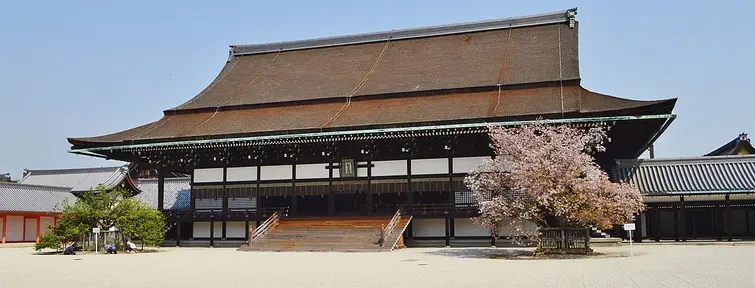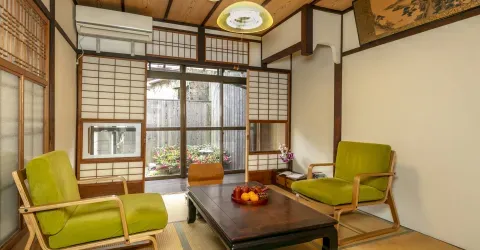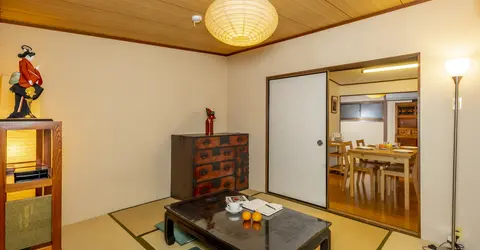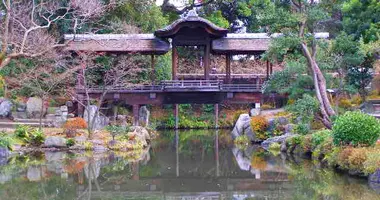Kyoto Imperial Palace: a historic gem in the heart of Kyoto
- Published on : 02/01/2024
- by : SR
- Youtube
History and significance of the Kyoto Imperial Palace
Emperors, empresses, princes and concubines lived for centuries behind the walls of Kyoto-gosho. Today the former imperial palace welcomes visitors and transports them back in time.
The Kyoto Imperial Palace, also known as Kyoto Gosho, served as the residence of Japan's Imperial Family for over a thousand years until 1868 when the capital was moved to Tokyo. The palace has a long and illustrious history dating back to 794 AD during the Heian period. Over the centuries, it underwent numerous modifications and reconstructions, with the current version completed in 1855. During the Edo period (1603-1868), the palace was the center of Japan's political system and featured exquisite gardens surrounding the main halls. Although parts of the palace were destroyed during World War II, select buildings were later restored. Today, the palace grounds are open to the public, offering a unique glimpse into Japan's imperial past and culture.
Exploring the palace grounds: key areas and buildings
Visitors to the Kyoto Imperial Palace can explore the expansive grounds and view the restored buildings from the outside. Some of the most notable structures include:
- Shishinden: The Hall for State Ceremonies, an imposing wood building with intricate carvings and wall paintings.
- Seiryoden: The Emperor's residence, later used for various gatherings and meetings.
- Kogosho: The Court Room, where the order to restore Imperial Rule was given in 1868.
- Ogakumonjo: The Imperial Study or Library.
The palace grounds also feature several beautiful gardens, such as the East Garden with its traditional Japanese design, complete with a pond and tea house.
The architecture and design of the main structures
The buildings within the Kyoto Imperial Palace showcase the evolution of traditional Japanese architecture throughout various periods. Key architectural elements include:
- Tiled roofs
- Wooden walls
- Elaborate decorations reflecting Japan's cultural heritage
The Shishinden and Seiryoden are prime examples of the palace's architectural grandeur, featuring Heian period design and serving as the backdrop for important ceremonies and events.
Important ceremonies and events held at the palace
The Kyoto Imperial Palace played a crucial role in Japan's imperial history, hosting significant ceremonies and events, such as:
- Enthronement ceremonies: Both Emperor Taisho (1912-1926) and Emperor Showa (1926-1989) had their enthronement ceremonies held at the palace, even after the capital moved to Tokyo.
- State receptions: The palace served as a venue for receiving dignitaries and hosting important political gatherings.
These events underscored the palace's importance as a symbol of Japan's imperial power and cultural heritage.
The palace's role after the Meiji Restoration
Following the Meiji Restoration in 1868, the Kyoto Imperial Palace experienced significant changes:
- The capital and Imperial Court were relocated to Tokyo, diminishing the palace's political importance.
- During the American occupation after World War II, parts of the palace grounds were converted into public spaces to promote a more democratic image.
- The Imperial Guard, which was stationed at the palace, was disbanded as part of Japan's demilitarization process.
Despite these changes, the palace remains a vital link to Japan's imperial past and a symbol of the country's rich cultural heritage.
Visiting the Kyoto Imperial Palace: tours and access
Visiting the Kyoto Imperial Palace is a unique experience that offers insight into Japan's imperial history and culture. Here's what you need to know:
- Admission is free, making it an excellent option for budget-conscious travelers.
- The palace grounds are open to the public throughout the year, except on Mondays and from December 28th to January 4th.
- Free 50-minute guided tours in English are available at 10:00 AM and 2:00 PM on days when the palace is open.
- No prior registration is required for these tours; simply gather at the Visitor's Room before the scheduled start time.
- Audio guides are also available for self-guided tours.
Remember to dress appropriately and follow the palace's rules and regulations to ensure a respectful and enjoyable visit.
The palace's surroundings: Kyoto Imperial Park and nearby attractions
The Kyoto Imperial Palace is situated within the expansive Kyoto Imperial Park, also known as Kyoto Gyoen National Garden. This lush green space is home to several other attractions:
- Sento Imperial Palace: A smaller palace complex originally built in 1630 for retired emperors, featuring picturesque ponds and gardens.
- Itsukushima Shrine: A tranquil Shinto shrine near the park's south gate, noted for its stone torii gate.
- Kaninnomiya Mansion: A former residence of Fujiwara clan members, open to the public near the south gate.
- Konoe Pond: A small pond surrounded by stunning cherry blossom trees, particularly breathtaking during the spring bloom.
The park itself is a popular spot for locals and tourists alike, offering a peaceful escape from the city with its wide gravel paths perfect for walking, jogging, or cycling.
Beyond the Imperial Park, visitors can easily explore other nearby attractions, such as Nijo Castle, the Kyoto National Museum, and Shimogamo Shrine. With its central location and proximity to public transportation, the Kyoto Imperial Palace serves as an ideal starting point for discovering the city's rich history and culture.
In conclusion, a visit to the Kyoto Imperial Palace is an essential experience for anyone interested in Japan's imperial history and cultural heritage. From its stunning architecture and serene gardens to its central role in significant historical events, the palace offers a unique window into the nation's past. By exploring the palace grounds and nearby attractions, visitors can gain a deeper appreciation for the enduring legacy of Japan's imperial era and its impact on the country's modern identity.
Address, timetable & access
Kyoto Imperial Palace
Address
3 Kyoto Gyoen, Kamigyo-ku
602-8611
Japan
Phone
+81 (0)75 211 1215Access
Subway: From Kyoto Station, take the Kurasuma Line to Marutamachi Station. Exit 1 for the south gate. For the north gate, take the Kurasuma Line to Imadegawa Station. On Foot: It is also possible to walk from downtown. From City Hall, walk north along Teramachi (the narrow street on the west side of City Hall) for about 10- 15 minutes. Teramachi has many small shops and restaurants.Website
https://sankan.kunaicho.go.jp/english/guide/kyoto.html































